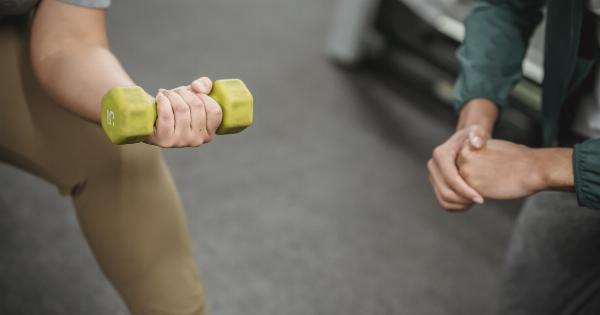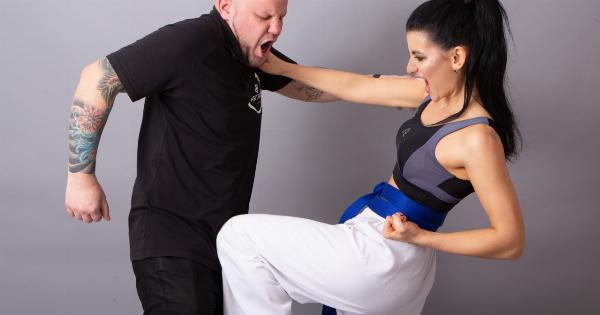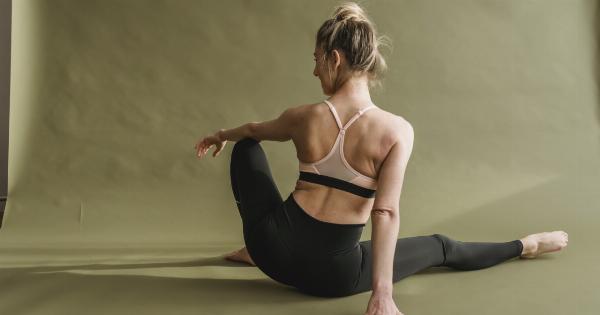Incontinence is a common and often embarrassing condition that affects millions of people worldwide. It can be caused by a range of factors, including aging, pregnancy, obesity, and certain medical conditions.
While there are various treatment options available, one of the most effective ways to manage and even eliminate incontinence is through regular exercise.
The Importance of Exercise
Exercise is not only crucial for maintaining overall health and fitness but also plays a significant role in strengthening the pelvic floor muscles, which are responsible for bladder control.
By engaging in targeted exercises that target these muscles, individuals with incontinence can regain control and reduce or eliminate their symptoms.
Types of Exercises
Several exercises are specifically designed to target the pelvic floor muscles and help individuals combat incontinence. These exercises include:.
1. Kegels
Kegel exercises involve contracting and relaxing the pelvic floor muscles. This exercise can be performed by squeezing the muscles used to stop the flow of urine and holding the contraction for a few seconds before releasing.
Gradually increasing the duration of each contraction can help strengthen the muscles over time.
2. Squats
Squats are a compound exercise that engages multiple muscle groups, including the pelvic floor muscles. By performing squats regularly, individuals can strengthen their pelvic floor and improve bladder control.
3. Bridge Pose
Bridge pose is a yoga exercise that targets the glutes and strengthens the pelvic floor muscles.
By lying on your back with your knees bent and lifting your hips off the ground, you can engage the pelvic floor muscles and improve their strength and control.
4. Pilates
Pilates exercises are known to target the core muscles, including the pelvic floor. These exercises focus on controlled movements and can help individuals with incontinence improve their overall muscle strength and control.
5. Pelvic Floor Training Apps
With the advancement of technology, several mobile apps are now available that provide guided pelvic floor training exercises.
These apps offer tailored exercise programs and progress tracking, making it easier for individuals to establish a regular exercise routine and monitor their improvement.
6. Aerobic Exercises
Engaging in aerobic exercises, such as brisk walking, swimming, or cycling, can also help strengthen the pelvic floor muscles. These exercises increase blood flow to the pelvic region, supporting muscle growth and improving bladder control.
7. Yoga
Yoga is an excellent form of exercise for individuals with incontinence. It emphasizes breathing techniques, relaxation, and various poses that target the pelvic floor muscles, improving their strength and control.
8. Tai Chi
Tai Chi is a gentle and low-impact exercise that involves slow and controlled movements. It helps improve balance, stability, and overall muscle strength, including the pelvic floor muscles.
Regular practice of Tai Chi can contribute to better bladder control and reduced incontinence symptoms.
9. Resistance Training
Engaging in resistance training exercises, such as weightlifting or using resistance bands, can help strengthen the pelvic floor muscles.
By gradually increasing the resistance over time, individuals can enhance muscle strength and regain control over their bladder.
10. Pilates Reformer
Pilates reformer machines offer a range of exercises specifically designed to target the pelvic floor muscles.
These exercises involve using the machine’s springs and straps to provide resistance and assistance, making it easier to isolate and engage the pelvic floor muscles.
Conclusion
Regular exercise is a powerful tool in the fight against incontinence.
By incorporating targeted exercises that strengthen the pelvic floor muscles into a daily routine, individuals can improve their bladder control and even eliminate incontinence altogether. Whether it’s kegels, squats, yoga, or resistance training, finding an exercise regimen that suits your preferences and needs is crucial.
Empower yourself to take control of your bladder and regain your confidence through these effective exercises.




























